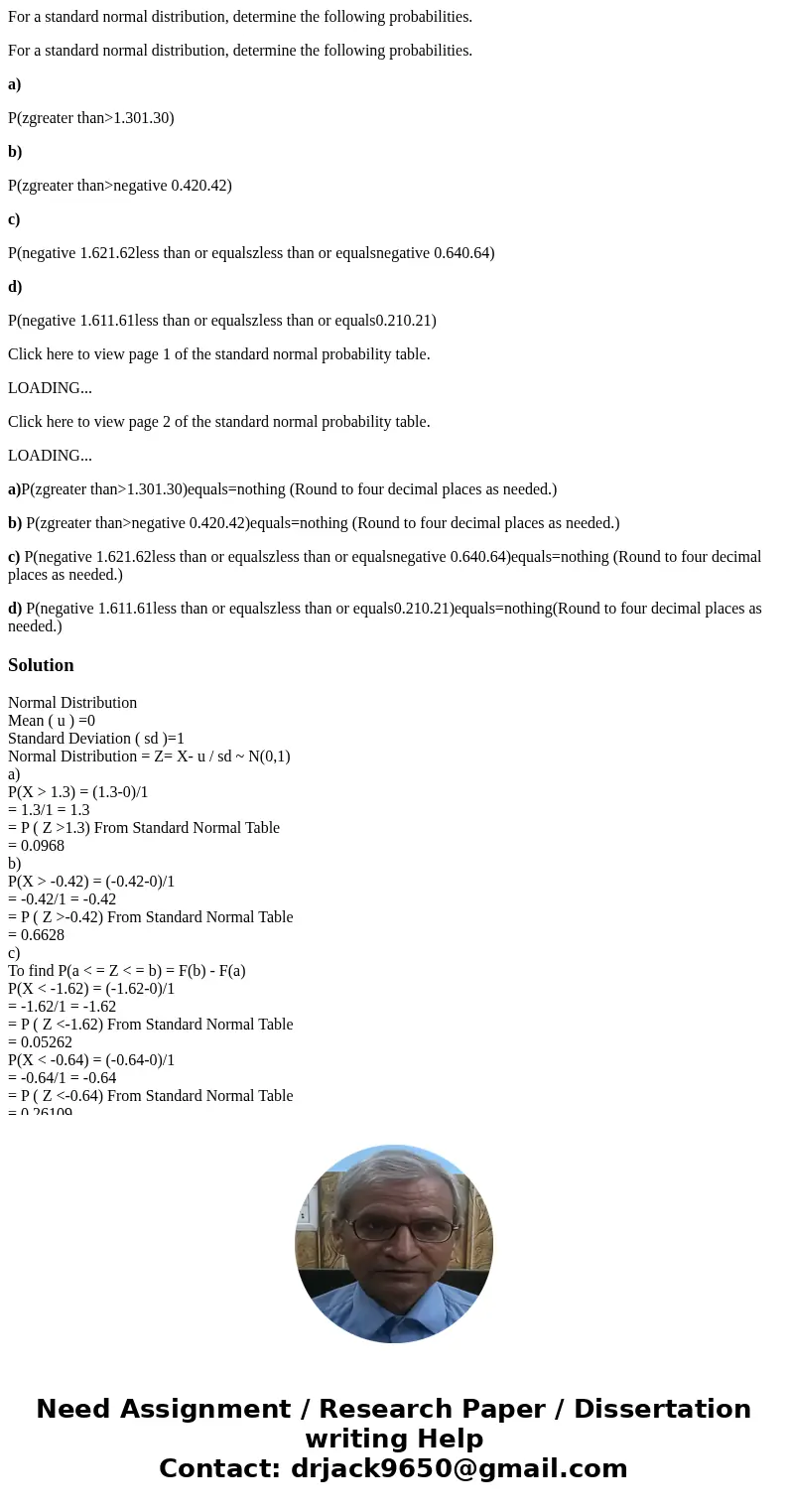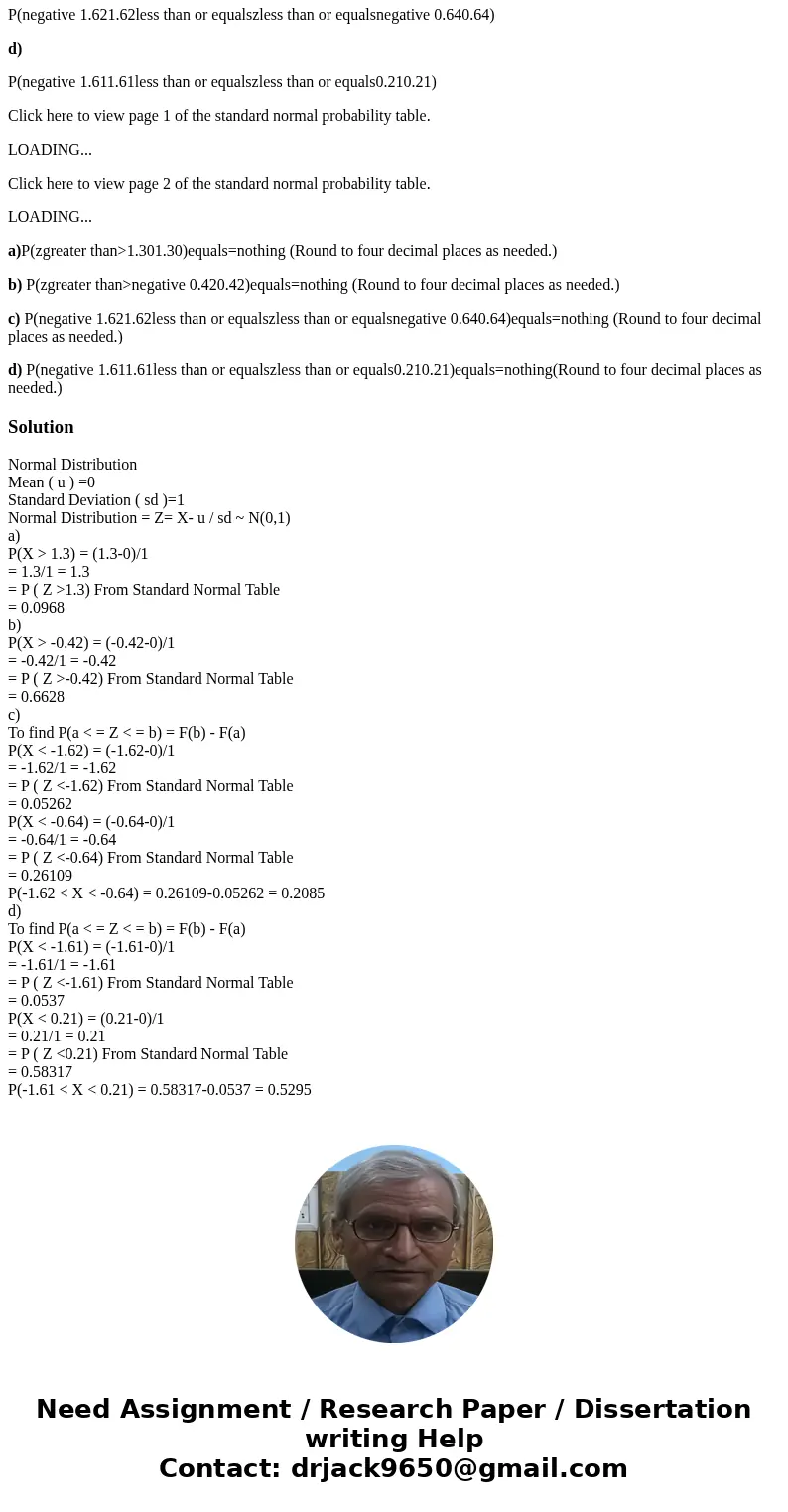For a standard normal distribution determine the following p
For a standard normal distribution, determine the following probabilities.
For a standard normal distribution, determine the following probabilities.
a)
P(zgreater than>1.301.30)
b)
P(zgreater than>negative 0.420.42)
c)
P(negative 1.621.62less than or equalszless than or equalsnegative 0.640.64)
d)
P(negative 1.611.61less than or equalszless than or equals0.210.21)
Click here to view page 1 of the standard normal probability table.
LOADING...
Click here to view page 2 of the standard normal probability table.
LOADING...
a)P(zgreater than>1.301.30)equals=nothing (Round to four decimal places as needed.)
b) P(zgreater than>negative 0.420.42)equals=nothing (Round to four decimal places as needed.)
c) P(negative 1.621.62less than or equalszless than or equalsnegative 0.640.64)equals=nothing (Round to four decimal places as needed.)
d) P(negative 1.611.61less than or equalszless than or equals0.210.21)equals=nothing(Round to four decimal places as needed.)
Solution
Normal Distribution
Mean ( u ) =0
Standard Deviation ( sd )=1
Normal Distribution = Z= X- u / sd ~ N(0,1)
a)
P(X > 1.3) = (1.3-0)/1
= 1.3/1 = 1.3
= P ( Z >1.3) From Standard Normal Table
= 0.0968
b)
P(X > -0.42) = (-0.42-0)/1
= -0.42/1 = -0.42
= P ( Z >-0.42) From Standard Normal Table
= 0.6628
c)
To find P(a < = Z < = b) = F(b) - F(a)
P(X < -1.62) = (-1.62-0)/1
= -1.62/1 = -1.62
= P ( Z <-1.62) From Standard Normal Table
= 0.05262
P(X < -0.64) = (-0.64-0)/1
= -0.64/1 = -0.64
= P ( Z <-0.64) From Standard Normal Table
= 0.26109
P(-1.62 < X < -0.64) = 0.26109-0.05262 = 0.2085
d)
To find P(a < = Z < = b) = F(b) - F(a)
P(X < -1.61) = (-1.61-0)/1
= -1.61/1 = -1.61
= P ( Z <-1.61) From Standard Normal Table
= 0.0537
P(X < 0.21) = (0.21-0)/1
= 0.21/1 = 0.21
= P ( Z <0.21) From Standard Normal Table
= 0.58317
P(-1.61 < X < 0.21) = 0.58317-0.0537 = 0.5295


 Homework Sourse
Homework Sourse